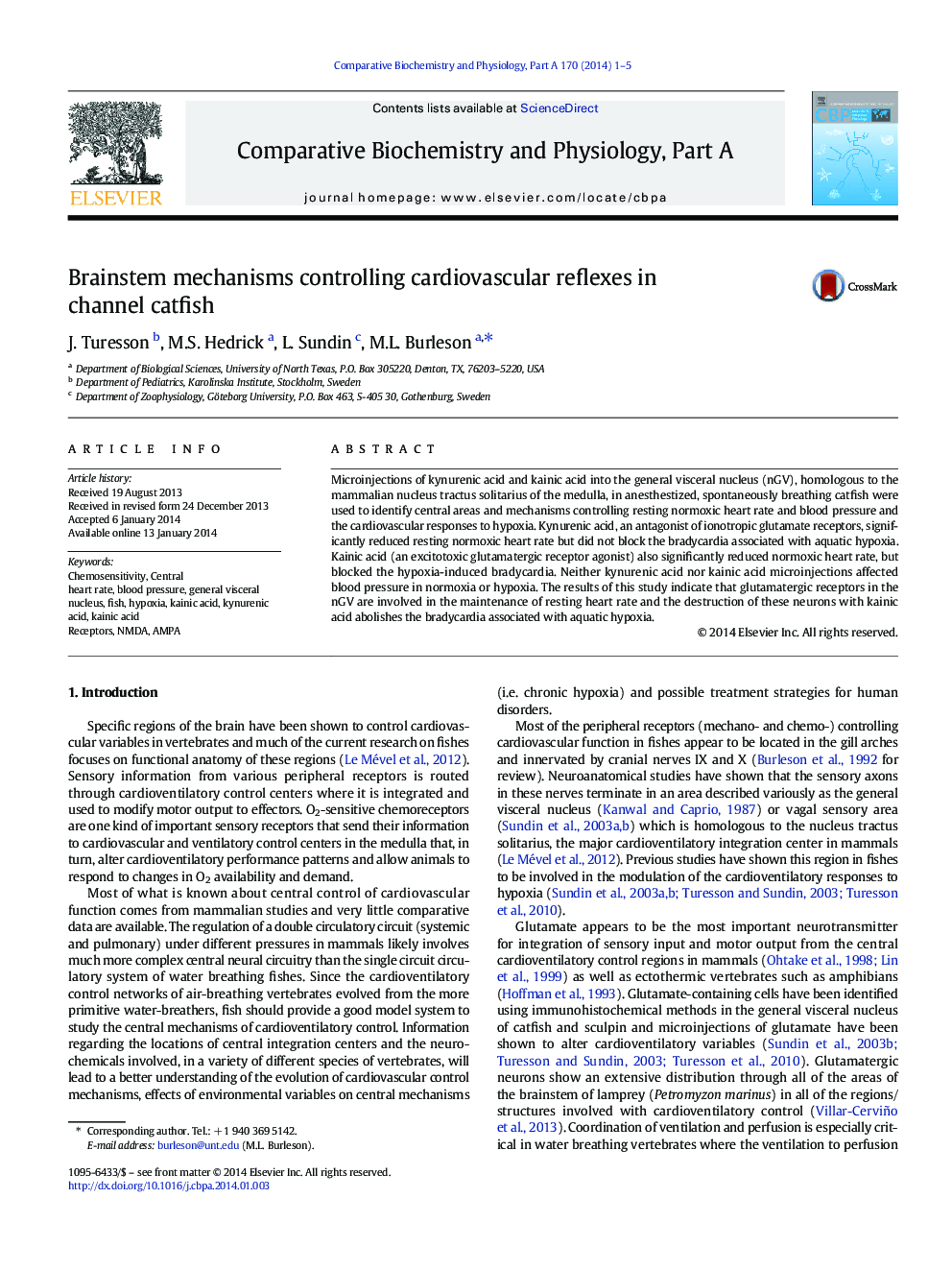| Article ID | Journal | Published Year | Pages | File Type |
|---|---|---|---|---|
| 1972212 | Comparative Biochemistry and Physiology Part A: Molecular & Integrative Physiology | 2014 | 5 Pages |
Microinjections of kynurenic acid and kainic acid into the general visceral nucleus (nGV), homologous to the mammalian nucleus tractus solitarius of the medulla, in anesthestized, spontaneously breathing catfish were used to identify central areas and mechanisms controlling resting normoxic heart rate and blood pressure and the cardiovascular responses to hypoxia. Kynurenic acid, an antagonist of ionotropic glutamate receptors, significantly reduced resting normoxic heart rate but did not block the bradycardia associated with aquatic hypoxia. Kainic acid (an excitotoxic glutamatergic receptor agonist) also significantly reduced normoxic heart rate, but blocked the hypoxia-induced bradycardia. Neither kynurenic acid nor kainic acid microinjections affected blood pressure in normoxia or hypoxia. The results of this study indicate that glutamatergic receptors in the nGV are involved in the maintenance of resting heart rate and the destruction of these neurons with kainic acid abolishes the bradycardia associated with aquatic hypoxia.
